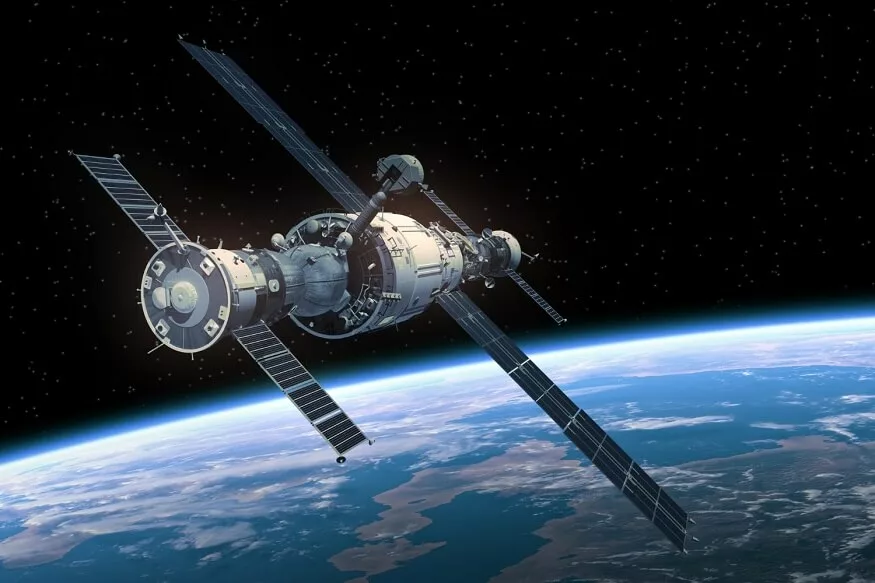Satellites, those extraordinary creations that silently traverse the celestial sphere around our Earth, have forever captured the human imagination with their unmatched ability to unravel the deepest mysteries of our planet and the cosmos. In this enthralling expedition through the captivating realm of satellites, we shall delve extensively into the multifaceted world of these cosmic emissaries, paying particular heed to weather satellites and communication satellites, as we uncover their monumental roles in our contemporary existence.
Unveiling the Intricacies of Satellite Science
Before we embark on this exhilarating voyage, it is imperative to underscore the profound science that underpins the very existence types of satellites. These orbital wonders are a testament to human ingenuity and scientific endeavour, serving as a tangible reflection of our relentless pursuit of knowledge and our unquenchable thirst for cosmic exploration.
Weather Satellites: A Portal to Nature’s Enigma
Among the pantheon types of satellites, weather satellites stand as an eloquent testament to the union of scientific prowess and technological innovation. These extraordinary spacecraft are meticulously crafted to scrutinise and amass vital data regarding Earth’s atmosphere, unravelling the labyrinthine mysteries of weather patterns, climate shifts, and the cataclysms of natural disasters.
Also read: Why is Pluto, not a planet? The Dwarf Planet of the Solar System
The Diverse Spectrum of Weather Satellites:
- Geostationary Weather Satellites: Picture a satellite serenely perched high above Earth’s equator, harmoniously synchronised with our planet’s graceful rotation. This is the essence of geostationary weather satellites. Their steadfast stationing enables continuous vigilance over specific regions, rendering them ideal for monitoring rapidly evolving weather phenomena such as tempestuous storms and menacing hurricanes. Armed with an impressive array of instruments, including cameras and spectrometers, they capture exquisite images and diligently harvest data on temperature, humidity, cloud cover, and a plethora of other atmospheric attributes.
- Polar-Orbiting Weather Satellites: They differ significantly from their geostationary counterparts. They gracefully orbit over Earth’s poles, providing a comprehensive view of the entire planet on each orbit. Equipped with advanced sensors, they collect vital data on temperature variations, atmospheric composition, and sea surface temperatures. This invaluable information is crucial for climate research and extended weather forecasting.
The Indispensable Role of Weather Satellites in Scientific Exploration:
Weather satellites are indispensable tools for both meteorologists and climate scientists. They act as vigilant sentinels, monitoring storms, predicting weather patterns, and observing climate changes. Their real-time data and imagery enable meteorologists to make accurate forecasts, issue early warnings for severe weather, and make informed decisions in disaster management.
Also read: Career as Scientist – How to Become, Courses, Skills required
Weather Satellites: Fostering Ground-breaking Scientific Insights
While weather satellites play a vital role in disaster readiness and management, they also serve as valuable assets in scientific research. Their capacity to analyse extended trends, assess the environmental consequences of human actions, and formulate practical solutions for addressing climate change is fueled by the data they acquire regarding Earth’s climate dynamics.
Communication Satellites: The Architect of Global Connectivity
In our contemporary world, characterised by an intricate web of global interconnectivity, communication satellites reign supreme as the unsung heroes of this digital age. These orbiting messengers enable instantaneous communication across vast expanses, facilitating international telephone conversations, internet access, television broadcasts, and an array of other indispensable services that define the modern human experience.
The Rich Tapestry of Communication Satellites:
Geostationary communication satellites can be likened to cosmic sentinels, positioned gracefully above Earth’s equator, perfectly synchronised with our planet’s elegant rotation. Their unwavering stance provides uninterrupted surveillance of designated regions, making them ideal for tracking swiftly evolving weather events such as storms and hurricanes. Equipped with advanced instrumentation, including cameras and spectrometers, these satellites have the ability to capture high-definition images and collect essential data on atmospheric attributes.
- Low Earth Orbit (LEO) Communication Satellites: In stark contrast to their geostationary kin, LEO communication satellites ply orbits that hew closer to Earth’s surface, typically cruising at altitudes spanning from 160 to 2,000 kilometres. These agile satellites congregate in constellations, working in harmonious synergy to bestow global coverage. LEO satellites are the stalwarts of mobile communication, facilitating satellite-based telephony and internet connectivity, thanks to their minimal signal latency and rapid data transfer capabilities.
Also read: Importance of Science Education in Schools
The Invaluable Role of Communication Satellites in the Nexus of Science and Technology:
Communication satellites constitute the bedrock upon which our modern communication edifice is founded. They enable the fluid transmission of both voice and data, knitting together the global tapestry of human interaction. These satellites underpin international telephone calls, seamless internet browsing, live television broadcasts, and even facilitate remote communication in areas bereft of terrestrial infrastructure.
Communication Satellites: Empowering Scientific Collaborations
While the primary mantle of communication satellites is to cater to the commercial and public communication needs, their indispensable contributions extend well into the realm of scientific research. These satellites facilitate the exchange of data between research institutions, obliterating geographical boundaries and fostering collaborations among scientists hailing from diverse corners of the globe.
Also read: Benefits of Science Education in School
Spy Satellites: The Silent Guardians of National Security
In the clandestine world of covert operations and national security, spy satellites, officially christened reconnaissance satellites, assume the mantle of silent sentinels. These highly specialised satellites are meticulously crafted to collect intelligence, scrutinise military activities, and offer strategic insights to government agencies.
Diverse Flavours of Spy Satellites:
- Imaging Reconnaissance Satellites: Armed with an arsenal of advanced imaging systems that encompass high-resolution cameras and radar sensors, imaging reconnaissance satellites undertake the delicate task of capturing intricate images of Earth’s surface. These visual gems furnish analysts with the capacity to oversee military installations, monitor troop movements, and catalogue transformations in geographical features with a high degree of precision.
- Signals Intelligence (SIGINT) Satellites: SIGINT satellites are consummate eavesdroppers, concentrating their efforts on the interception and decipherment of signals. They listen intently to radio transmissions and electronic communications, eking out intelligence from the wavelengths of adversarial chatter. This facet of their mission involves monitoring enemy communication networks, tracking the electronic signatures of military hardware, and assembling a mosaic of intelligence from the whispering tendrils of signals.
Spy Satellites: The Synthesis of Security and Scientific Innovation
While the primary raison d’être of spy satellites is rooted in national security, the cutting-edge technology that is nurtured in the crucible of their development often finds applicability in the scientific domain. Innovations in imaging and sensing technologies, originally forged for the clandestine world of espionage, have subsequently infiltrated the scientific realm. These technological marvels have played instrumental roles in environmental monitoring, disaster response, and the realm of scientific investigation, including the meticulous mapping of alterations in Earth’s surface.
Conclusion
As we draw our expedition through the expansive domain of satellites to a close, an undeniable truth emerges: these cosmic wonders symbolise the harmonious fusion of science, technology, and innovation. Despite their distinct roles, weather satellites, communication satellites, and spy satellites share a common mission: the unwavering quest for knowledge and the enhancement of our daily lives.
Weather satellites, with their steadfast dedication to Earth’s climate, empower us to predict and alleviate the impact of severe weather events. Communication satellites bridge gaps, uniting people, cultures, and nations in a global tapestry of connectivity. Spy satellites, shrouded in secrecy, embody the pinnacle of technological prowess, contributing to national security and the advancement of scientific understanding.
The EuroSchool is a prestigious institution known for its cutting-edge education and exploration of various scientific disciplines. In one of its enlightening sessions, the students were introduced to the captivating world of satellites, with a particular focus on weather satellites, communication satellites, and spy satellites. This engaging topic not only ignited the curiosity of the students but also highlighted the pivotal roles these satellites play in our modern world. From unravelling the mysteries of weather patterns and climate change with weather satellites to understanding the intricate web of global communication through communication satellites, and delving into the world of national security with spy satellites, EuroSchool provided its students with a comprehensive understanding of these orbiting marvels and their profound impact on science and society.











